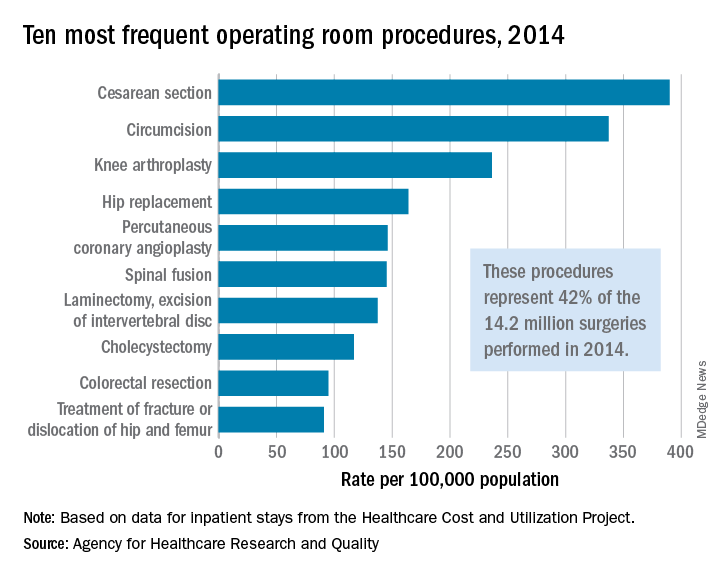The represented almost 55% of the 14.2 million operating room procedures performed during inpatient stays in the United States, according to the Agency for Healthcare Research and Quality (AHRQ).
More than 1.2 million of those procedures involved cesarean sections, making it the most frequently performed in-hospital surgery in 2014 with a rate of 390 per 100,000 population, which works out to 8.8% of all procedures. Circumcision was second with 337 procedures per 100,000, followed by knee arthroplasty (236), total and partial hip replacement (164), and percutaneous coronary angioplasty (146), the AHRQ reported in a statistical brief.
Spinal fusion was sixth, with a rate of 145 per 100,000. Six of the top 20 inpatient procedures were musculoskeletal – specifically, knee and hip replacement, spinal fusion, treatment of hip and femur fracture or dislocation (ranked 10th), treatment of other lower-extremity fracture or dislocation (16th), and lower-extremity amputation (18th) – and constituted 16.6% of all operating room procedures in 2014, the AHRQ researchers noted.There were four obstetric/gynecologic procedures among the top 20 – namely, cesarean section, ligation of fallopian tubes (ranked 11th), hysterectomy (13th), and oophorectomy (15th) – and these together represented 13.5% of all surgeries that year. The three digestive procedures in the top 20 – cholecystectomy (ranked 8th), colorectal resection (9th), and appendectomy (12th) – made up 6.4% of all operating room procedures, they said based on data from the AHRQ’s Healthcare Cost and Utilization Project.


